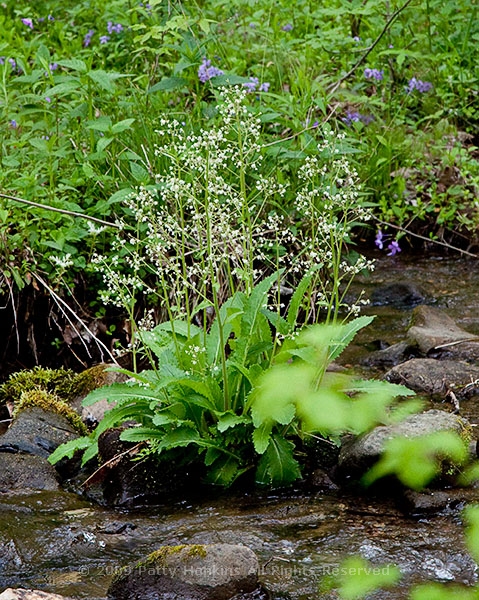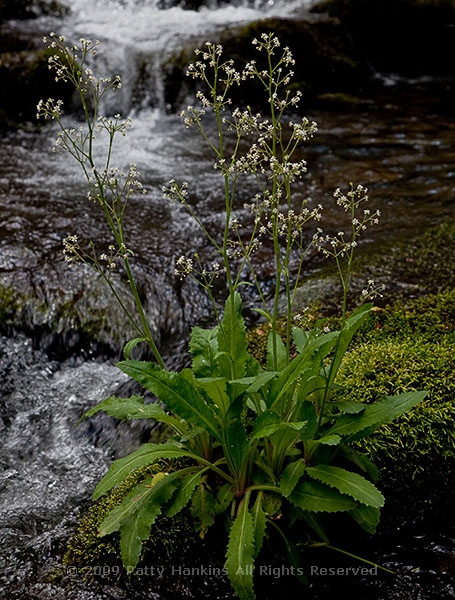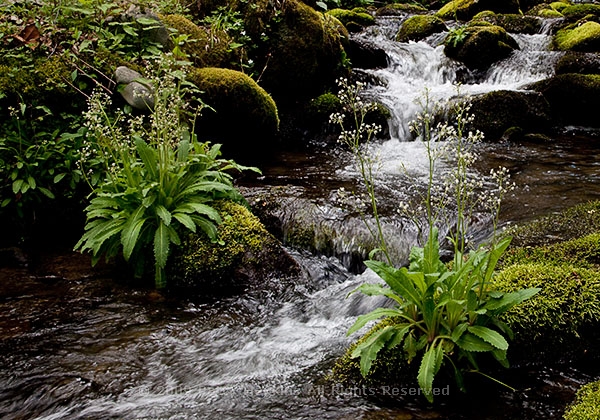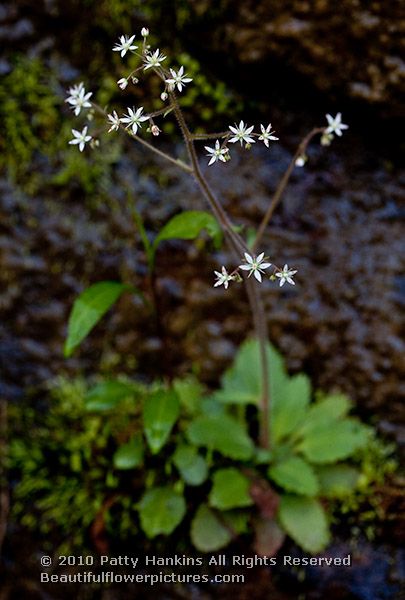In the past few years, I’ve photographed several members of the Saxifragaceae family. Most of the 30 genera and 580 species of Saxifragaceae are herbs. Found throughout the world, they usually have a basel whorl of leaves with flowers above the leaves. The members of the family I photographed have been wildflowers blooming in Tennessee in the spring.
The first Saxifrage I photographed is Brook or Mountain Lettuce ( saxifraga micranthidifolia). Brook Lettuce is an early blooming perennial wildflower. It grows in stream beds and in other wet areas. The plants grow up to 32″ tall, with small white flowers. Brook Lettuce is native to parts of the mid-Atlantic and South Eastern US. It is found in PA, MD, VA, WV, NC, SC, GA, KY and TN. According to some of the wildflower walk leaders I’ve heard describe Brook Lettuce, early settlers used to eat the leaves in the spring since after a long winter there were few other fresh greens available to them.
All three of my Brook Lettuce photographs were taken in the Great Smoky Mountains National Park and show the Brook Lettuce growing along some of the beautiful streams in the park.
This first photograph was taken along Old Settlers Trail.
(c) 2009 Patty Hankins
The other two photographs were taken along Porter’s Creek Trail.
(c) 2009 Patty Hankins
Carey’s Saxifrage (saxifraga careyana) is another member of the Saxifrage family that I photographed last spring in Tennessee. It took me a while to identify what it was. Then one day I was looking at the photos and realized how similar it looked to Brook Lettuce – that gave me the clue to check out the other members of the saxifrage family. Once I was looking in the right family, I was able to identify it as Carey’s Saxifrage.
Carey’s Saxifrage grows in moist rocky areas. It has a rosette of leaves at the base with clusters of small white 5 petaled flowers. Carey’s Saxifrage is native to VA, TN, NC, SC, GA and AL. I photographed it at Laurel Snow Pocket Wilderness in Dayton.
Now that I’ve learned to identify members of the Saxifrage family, I’ll be keeping an eye out for more of them on my next trip to the Smokies. I’ll be posting photos of a few other Saxifrages in a few days.




Patty — I wish you had a video camera and had taken a long clip of your third picture — the one with the two Saxifrass plants on either side of the stream. What you have there would be even more impressive in video with sound. I love the sounds of a gurgling brook!
When I get home after a long day — some of my days are really, really long — I love to plop down in front of the tv and watch something. Sadly, there is too much sex, violence and bad news. I love watching natural scene videos. As you know nature as no sin — only us and our brothers and sisters… The beauty of nature has amazing healing powers. I know that you know that!
Phillip
PS — please keep up the good work. I look forward to see what new things you send, but please consider bringing a video camera wired for sound.
You said the early settlers ate the leaves…..yes, and we young ones who were showed the plant by our parents, still enjoy it. Cut the leaves up with onions and pour hot grease over it. Serve with cornbread and beans ! ! Yum.